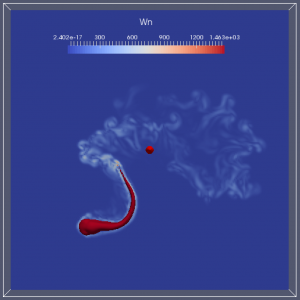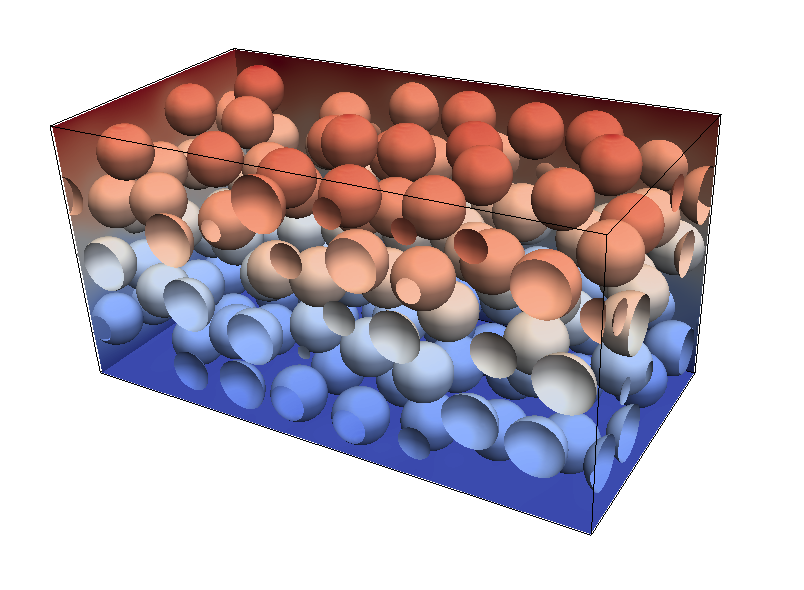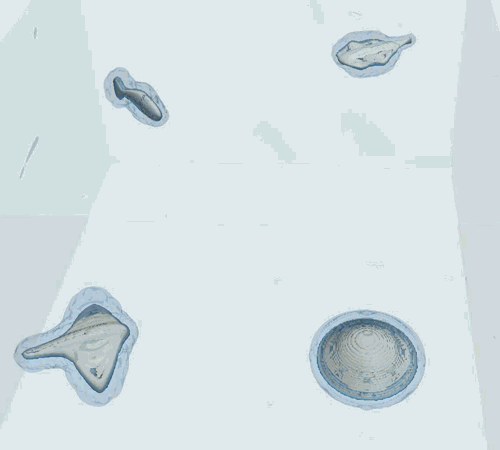Passive particle flow
The passive flow configuration is composed of hundreds of spheres in a Couette flows. The particles move thanks to the hydrodynamic forces and torques exerted by the fluid onto the bodies. For high volume fraction, typically greater than 10%, interactions between particle can play en important role. These interactions are modeled thanks to central Newtonian forces. The configuration is given in the left figure below. The right figure presents the evolution of the average vertical profile versus the volume fraction ranging approximatively from 0.05 to 0.25.
Active particles flow
The active particules we chose are swimmer prototypes. We simulated fish like swimming, as well as other kind of swimmers like jellyfish, ray fish and knife fishes, see figure below. The deformation of the swimmers is prescribed but the displacement is computed from Newton’s laws thanks to hydrodynamic forces and torques.
We also simulated the locomotion of 5 dpf zebrafish larvae from experimental data. The simulations were performed in 2D and in 3D as well. The zebrafish is reconstructed in 3D from multiple transverse slices while the deformations are extracted from experimental films. With this process, we simulated the C-start response – a classical escape swimming.








